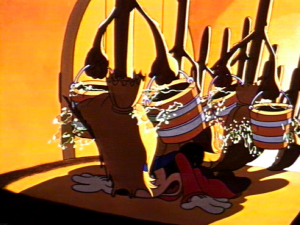Mark Wadsworth has been musing on moose this week - more specifically, the pair that have arrived to repopulate the Scottish Highlands.
The male and female moose are part of ambitious and controversial proposals by a millionaire landowner to recreate an ancient mountain habitat, complete with wolves, lynx and brown bears roaming freely within a vast fenced-off wildlife reserve north of Inverness.
The wolf release plans suffered something of a setback earlier this year but the moose, being vegetarians and thus less likely to help themselves to the local indigenous wildlife/sheep/hill-walkers, have arrived ready to set about their mammoth task - no pressure there, then!
Should they succeed in creating a new generation, motorists will have to deal with the not inconsiderable risk of running into one on a secluded road; not for nothing do Canadian highways carry the iconic moose warnig signs at regular intervals. Still, should a moose despatch you, at least it will not add insult to injury by tucking into your mortal remains.
On last year's trip to the Highlands, we were accompanied by a Canadian visitor who was most amused that the most dangerous animals we encountered were cattle (see Under Siege); her garden is invaded by bears on a regular basis and she found it quite a novelty to be in a wilderness where there is nothing that might want you for lunch (except the midges).
If these plans go ahead, things may eventually be rather different. The beavers released in Argyll - amid much protest from those who want to keep the Border salmon rivers as they are - have survived and are breeding, but the diffficult terrain means researchers are finding it impossible to track them down and their electric tags have dropped off.
Now consider the impact of dozens of top predators wandering at will in the northern glens - they are bound to break out of the planned reserve sooner or later. It's true that these animals already roam wild in populated countries but people there are accustomed to dealing with them - and even so, attacks happen.
A few years ago, on a visit to Canada, we arrived at the idyllic remote lakeside cabin we were renting to discover that there was a bear reservation next door - with no fences. 'No problem', said the owner; 'just make sure you don't sneak up on them. Make plenty of noise and they'll stay away.'
That is the reason that most Canadian hikers wear bear bells on their clothing or hiking poles, though it's advisable to carry pepper spray too. It helps if you keep an eye out for bear scat, so you can get an idea of their movements - and which kind you are dealing with.
As any rural Canadian will tell you, black bear scat contains berries and small pieces of fur, while grizzly scat smells of pepper and contains small bells.
How About 'No Thanks!'
1 hour ago








